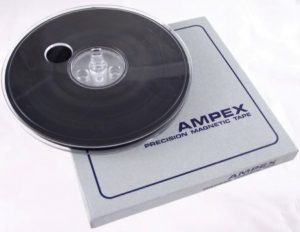History (1949): Open Reel Instrumentation and Data Logging Tape
First use of magnetic tape on modified Ampex Model 300s
This is a Press Release edited by StorageNewsletter.com on November 19, 2018 at 2:30 pmThis article was published by the Museum of Obsolete Media.
Open reel instrumentation and data logging tape (1949-2000s)

Magnetic tape was first used for data logging and instrumentation recording in 1949, when Jack Mullins installed modified Ampex Model 300s at Point Mugu Naval Air Station and at Edwards Air Force Base, both in southern California.
Tape has been heavily used since then for military, industrial, government and research applications. The Inter-Range Instrumentation Group (IRIG) set the standards for instrumentation tape recorders.
Instrumentation recorders were built to much more stringent standards than other tape recorders, and recorders that used direct, FM and PCM recording have been available.
On half-inch wide tape, there are typically 4 tracks, whereas on half-inch tape there were 7, or sometimes even 14 tracks.
On one-inch tape, there were 14 or 28 tracks.
Tape is usually wound on the reel with the recording surface facing towards the hub (the opposite of audio tape). Metal NAB reels were often used, for reels between 10.5 and 16 inches, but 7-inch plastic reels with cine spindle hubs have also been used.
Instrumentation recorders also used tape in cassette form, including systems that recorded onto S-VHS tape, and the Digital Instrumentation Recorder from Sony that used the SD1 cassette.
Instrumentation and data logging systems now use hard disks or flash memory for storage













 Subscribe to our free daily newsletter
Subscribe to our free daily newsletter

